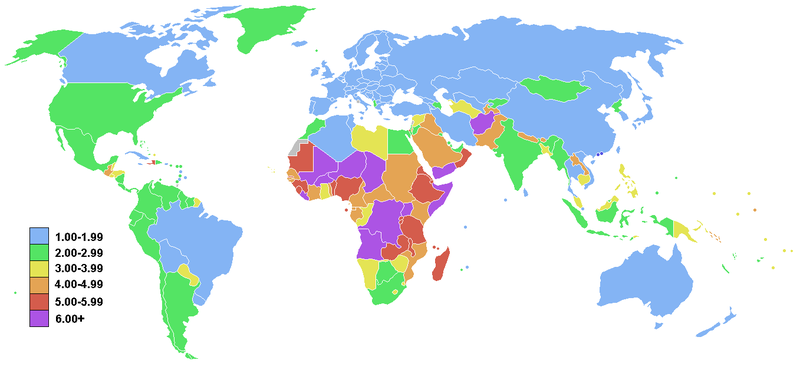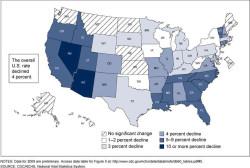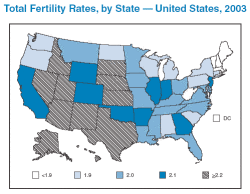-{This was originally posted at Ordinary Times. As this post involves immigration and such, and since the previous prohibition on discussing race and immigration has been cautiously lifted when on-topic, those subjects are obviously not off-limits. I do ask that they be approached with some care.}-
 Sometimes it seems as though live in two realities. Well, one reality, at a fork in the road, leading to two opposite futures. Earth 1 faces a future that is heavily automated. So automated, in fact, that we cannot realistically find enough self-supporting work for everybody. Not that there wouldn’t be things for people to do in exchange for money, but the market wages they get would be insufficient to be able to afford a lifestyle that we would consider to be respectable and reasonable. It is because of this that I sometimes think we need to divorce the notion of work and self-sufficiency. That, even if “the 53%” statistic wasn’t deeply misleading, it would be a blinkered way to look at it so long as we assume that most the remaining 47% were working, had retired from a lifetime of work, or were on the road to working. If there are more people than market-adding places to put them, I simply can’t view people as the problem.
Sometimes it seems as though live in two realities. Well, one reality, at a fork in the road, leading to two opposite futures. Earth 1 faces a future that is heavily automated. So automated, in fact, that we cannot realistically find enough self-supporting work for everybody. Not that there wouldn’t be things for people to do in exchange for money, but the market wages they get would be insufficient to be able to afford a lifestyle that we would consider to be respectable and reasonable. It is because of this that I sometimes think we need to divorce the notion of work and self-sufficiency. That, even if “the 53%” statistic wasn’t deeply misleading, it would be a blinkered way to look at it so long as we assume that most the remaining 47% were working, had retired from a lifetime of work, or were on the road to working. If there are more people than market-adding places to put them, I simply can’t view people as the problem.
But then there is Earth 2. In Earth 2, economic progress and stability is dependent on an expanding – or at least non-contracting – population. History, by and large, has not been particularly kind of nations that have had contracting populations over any significant period of time.  Hopefully, this is not the Earth that we live on. If it is, like a lot of doom scenarios, it is very much the sort of problem we would not be able to see until it’s too late.
Hopefully, this is not the Earth that we live on. If it is, like a lot of doom scenarios, it is very much the sort of problem we would not be able to see until it’s too late.
As it stands, it seems silly to worry about declining population in a world where we have millions and millions of people who cannot be fed. But it’s under-developed nations where high-volume reproduction is occurring and it’s in developed nations where reproductive rates are hovering around – or falling below – replacement level. As the world develops, it doesn’t seem so silly to worry about the rest of the world following the developing world’s lead when it comes to smaller families.
But enough about the world. Let’s talk about the United States. Jonathan Last has written What To Expect When No One’s Expecting, a book about demographics that takes place on Earth 2.
Last contends that America – and the western world – has its own One Child Policy (or policies). Not a specific law, as is the case in China, and in many cases not formal laws at all. Instead, we have a series of laws and cultural influences that significantly discourage reproduction. This includes, but is not limited to (in no particular order): urbanization, Social Security, Medicare, changes in household economics, the declining influence of religion, the increasing education of women, divorce, premarital cohabitation, and (my favorite) child safety seat laws. Last goes out of his way to point out that at least some of these changes are positive on the whole, but even positive social changes can have negative effects when it comes to fertility rates.
 Last is concerned that the United States has entered, or is entering, the same spiral that much of Europe has. Lower and lower fertility. Our reproductive rates now are okay, but are in his analysis propped up in good part by the higher fertility rates of immigrants and possibly due to a downward adjustment due to the continued strengthening of the factors that have afflicted Europe and the United States over time. He is also not very sanguine about the obvious answers. Along these lines, if your response to the description of this problem is “If we want to increase fertility, all we’ll have to do is…” there is a good chance that he makes a case for why you are wrong in the book. He is even pessimistic about his own policy prescriptions.[a]
Last is concerned that the United States has entered, or is entering, the same spiral that much of Europe has. Lower and lower fertility. Our reproductive rates now are okay, but are in his analysis propped up in good part by the higher fertility rates of immigrants and possibly due to a downward adjustment due to the continued strengthening of the factors that have afflicted Europe and the United States over time. He is also not very sanguine about the obvious answers. Along these lines, if your response to the description of this problem is “If we want to increase fertility, all we’ll have to do is…” there is a good chance that he makes a case for why you are wrong in the book. He is even pessimistic about his own policy prescriptions.[a]
At times he comes across as too dismissive of various ideas. He is correct that most of the proposals suggested have proven ineffective or marginally effective elsewhere, but for the same reasons that it’s often misguided to suggest that because something works in Sweden that it would of course work here, it’s potentially the same when talking about what won’t work here. While Last is correct that we cannot – and should not even if we could – bribe people who don’t want to be parents into doing so, things that come across as bribes (or something like bribes) to him come across as relief to me.
 For example, while he does not express firm opposition to subsidized daycare, he does express skepticism of its efficacy on the basis of its limited success elsewhere. Without getting too much into anecdata, my wife and I had initially talked of three children but are now likely to content ourselves (God, nature, and biology willing) with two. Why? Delayed fertility. Why? Logistics, where confidence in our ability to find day care would have affected our decision-making greatly. Last is quite right to point out that individually this policy is not likely to have as large an effect as needed. My wife and I are one case, and with someone else it might be a different set of reasons. While a daycare stipend – that parents could pocket in the event that one of them is staying home or if they have relatives willing and able to take care of them – could make what we considered at the time to be “a logistical nightmare” a little more feasible.
For example, while he does not express firm opposition to subsidized daycare, he does express skepticism of its efficacy on the basis of its limited success elsewhere. Without getting too much into anecdata, my wife and I had initially talked of three children but are now likely to content ourselves (God, nature, and biology willing) with two. Why? Delayed fertility. Why? Logistics, where confidence in our ability to find day care would have affected our decision-making greatly. Last is quite right to point out that individually this policy is not likely to have as large an effect as needed. My wife and I are one case, and with someone else it might be a different set of reasons. While a daycare stipend – that parents could pocket in the event that one of them is staying home or if they have relatives willing and able to take care of them – could make what we considered at the time to be “a logistical nightmare” a little more feasible.
I don’t wish to puff up the importance of our own reproduction. The world will not change because we have two kids instead of three. But we are the sort of people that Last expresses the most concern over. While he is worried about reproductive rates more generally, he is specifically concerned about the educated and the more sharp decline in fertility among them. This can be a controversial point, because it conjures the ghosts of eugenics, but Last takes the more positive and affirmative view: It’s not about poor people having fewer children, but increasing the number of children that educated people have.
 To repeat, Last states over and over again that we shouldn’t shame people who don’t want kids to have them. The question is, to the extent that we live on Earth 2, how to convince people to have closer to the number of babies that they consider to be ideal and how many they expect to personally have at the outset. At present, the “expected fertility” (how many people want or plan to have) and actual fertility are similar. This is, however, due in large part to less educated people having, statistically, more children than they had intended. As such, our fertility could rebound simply by having those who underproduce (by their own expectation). Women who go to college have, on average, .5 fewer kids than intended, which is a notable gap.
To repeat, Last states over and over again that we shouldn’t shame people who don’t want kids to have them. The question is, to the extent that we live on Earth 2, how to convince people to have closer to the number of babies that they consider to be ideal and how many they expect to personally have at the outset. At present, the “expected fertility” (how many people want or plan to have) and actual fertility are similar. This is, however, due in large part to less educated people having, statistically, more children than they had intended. As such, our fertility could rebound simply by having those who underproduce (by their own expectation). Women who go to college have, on average, .5 fewer kids than intended, which is a notable gap.
Even though I spend significant time on Earth 1, where none of this is an issue, the book nonetheless resonated with me personally for several reasons. Yeah, more anecdata. First off, my own siblings and my wife’s siblings have almost all decided to forego children. The same applies to a significant chunk of my peers. I am also of the age where my peers that do want children are running out of time, which I consider to be a lost opportunity for society as well as for the would-have-been parents. And lastly, I think of my wife and I and the various decisions we made. We have one child and will probably be able to have another, but things could have turned out differently and our delays could have had tragic consequences.
To be clear, I am not begrudging anybody in the don’t-want-kids their decision. By and large, I think they are making the right choice and think that few of them will regret their decision. The happiness and satisfaction statistics bear that out. It’s the second group I wonder what, if anything, we can do about as a culture. In either case, I feel like I am at Ground Zero of precisely what Last is talking about.
 As Last himself points out repeatedly throughout the book, demography is not destiny. Further, Ordinary Times commenter DanD has made a solid case to me that things in the good ole USA are not actually as bad as they appear. Between 1950 and 1979, cohort fertility estimates have actually been on the climb and completed fertility was higher for those born in 1970 (who aren’t entirely ‘completed’!) than for those born in 1950. And up and down the tables (Table 2 and Table 2 updated here) are broadly encouraging. Thirty-two year olds in 2010 have more children than did 32 year olds in 2000 than did 32 year olds in 1990[b]. And lastly, while ideal fertility rates (the number of children people abstractly think is the “best” number of children) has remained relatively constant[c][d].
As Last himself points out repeatedly throughout the book, demography is not destiny. Further, Ordinary Times commenter DanD has made a solid case to me that things in the good ole USA are not actually as bad as they appear. Between 1950 and 1979, cohort fertility estimates have actually been on the climb and completed fertility was higher for those born in 1970 (who aren’t entirely ‘completed’!) than for those born in 1950. And up and down the tables (Table 2 and Table 2 updated here) are broadly encouraging. Thirty-two year olds in 2010 have more children than did 32 year olds in 2000 than did 32 year olds in 1990[b]. And lastly, while ideal fertility rates (the number of children people abstractly think is the “best” number of children) has remained relatively constant[c][d].
Last remains concerned that as immigrant fertility rates give way to domestic norms, though, that our overall fertility rate will begin to fall[e]. Combine that with other cultural trends, including secularization, delayed marriage, and delayed childbearing, and we could be looking at a significant downward trend. Further, due to falling birthrates abroad, we may not have the pool of potential immigrants to keep our population growing[f] – and that’s if we could successfully incorporate such large numbers of immigrants as might be required anyway[g]. We are also – as in so many other ways – a nation of wildly divergent states fertility rates among states in the US vary more greatly than fertility rates among European nations – and he fears that we might be looking at a case where high-reproductive states simply haven’t started the slide that the European blue states have.
 I look at his worst case scenarios and I am, to be honest, not entirely convinced. Last provides just enough caveats to keep me from being that nutbar holding up a sign on the corner saying “The End Is Nigh! Go Home And Reproduce!” Having spent most of my life in Red America, there aren’t enough similarities with the lower-fertility Blue America to really think that red states will start emulating their bluer brethren. Many of the factors that make blue states as expensive they are just won’t apply to the likes of Texas and Montana and their limitless space for family-friendly expansion[h]. Last himself also points out the possibility of a religious rebound effect where the population increasingly becomes the offspring of the religious and therefore more religious themselves and therefore reproducing in higher numbers. Or, put another way, the contingent of the population that wants fewer kids will have fewer or no kids and will become statistically less relevant over time. And lastly, a lot of the factors – though not all – that he cites as reasons for declining fertility have already played out and we’re still standing. I always like to say that We Are Not Europe, and here that may be an unqualified good thing.
I look at his worst case scenarios and I am, to be honest, not entirely convinced. Last provides just enough caveats to keep me from being that nutbar holding up a sign on the corner saying “The End Is Nigh! Go Home And Reproduce!” Having spent most of my life in Red America, there aren’t enough similarities with the lower-fertility Blue America to really think that red states will start emulating their bluer brethren. Many of the factors that make blue states as expensive they are just won’t apply to the likes of Texas and Montana and their limitless space for family-friendly expansion[h]. Last himself also points out the possibility of a religious rebound effect where the population increasingly becomes the offspring of the religious and therefore more religious themselves and therefore reproducing in higher numbers. Or, put another way, the contingent of the population that wants fewer kids will have fewer or no kids and will become statistically less relevant over time. And lastly, a lot of the factors – though not all – that he cites as reasons for declining fertility have already played out and we’re still standing. I always like to say that We Are Not Europe, and here that may be an unqualified good thing.
Maybe this is sort of like global warming, where the lack of solutions to a reported problem are such that I am clinging to a hope that there isn’t a problem at all. A desire, on my part, to believe that I did not bring a daughter, and will not bring a future son or daughter, into a nation struggling in the manner Last describes. Hope springs eternal, or a sand-buried head. You decide.
Which would leave me to perseverate on Earth 1, which is a pretty scary place.
—-
[a] The accompanying graph is from NPR, which suggests the declining fertility we’ve seen in the last few years has a cause for which Mr. Last may very much approve: Increasing rates of abstinence. No, I don’t buy it, but it’s an interesting thought.
[b] The same does not apply to 42-year olds. In 1990, they were born in 1948, which was the tail end of the Baby Boom. It did, however, increase from those born between 1948 to 1958.
[c] There has been an interesting shift away from two as an ideal and towards three as an ideal. On the other hand, there has been a shift away from six or more. I cannot at present find information on how the mean has moved, if at all, though the graphs DanD provided suggest upward. The first chart is 20-26 year olds in the 1950’s, while the second chart is for those born after 1985.
[d] Accompanying graph from Max Planck Institute for Demographic Research, which expresses a bullish view of fertility on the basis of cohort fertility rates.
[e] The same effect that may be making native fertility rates look lower than they are arguably making immigrant fertility rates seem higher than they are, and in fact they may not be very high at all. According to this report, Hispanics have fallen below replacement rates, and Mexican-Americans tend to have lower fertility rates than other Hispanics).
[f] He uses Puerto Rico as an instructive example. Puerto Rico used to be the source of large numbers of newcomers. But as their fertility declined, so too did their immigration numbers. It likely is reasonable to believe that, as fertility rates in Mexico and points southward fall, there won’t be the excess labor to send our way.
[g] Immigration can help fill in gaps, though too much immigration can create problems both logistical and cultural. I am personally of the view that our current immigration regime – including non-enforcement of our border and the unauthorized immigration that results from it – put us nowhere near that threshold. However, it’s hard to look at a situation like Germany’s and be nearly so sanguine about immigrant replacement. In the US, there are places that we have room for people and there are places that immigrants tend to prefer where there is often less room.
[h] Energy costs being the big potential problem on the horizon. I am still a skeptic of new urbanism, but in the event I am wrong and we do have to become far more dense, my optimism here might be misplaced. If that’s the case, however, the result could be red states looking more like blue states with increasing density and higher costs of living, or people simply leaving red states for blue states. Whichever the case, to whatever degree that housing and cost of living are influencing procreative decision-making, it will be doubly severe.
About the Author
please enter your email address on this page.
